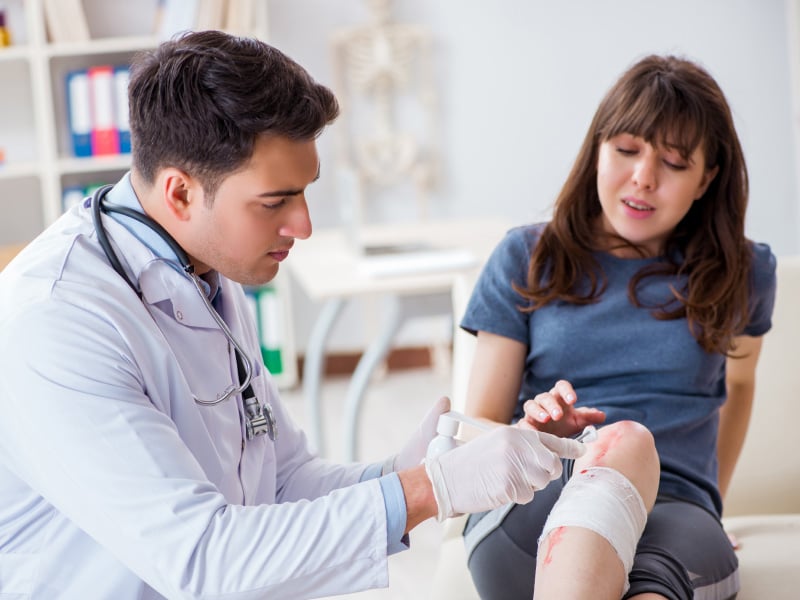
Ambulatory Care Providers Can Combat Sepsis through Prevention, Identification, and Treatment
Sepsis is the body's overwhelming response to infection and can lead to tissue damage, organ failure, and death. According to the Centers for Disease Control and Prevention, anyone can get an infection, and any infection can lead to sepsis, including bacterial infections such as Staphylococcus aureus and Escherichia coli, as well as viral infections such as COVID-19 or influenza.
According to the Sepsis Alliance, more than 1.7 million adult Americans develop sepsis each year, and approximately 30% of those diagnosed with severe sepsis do not survive. Among survivors, up to half develop postsepsis syndrome, leading to a shortened life expectancy, impaired cognitive function, and diminished quality of life. Yet it is estimated that 35% of adult Americans have never heard of sepsis.
Since sepsis is a medical emergency where seconds count, ECRI highlighted the delayed identification and treatment of sepsis in the Top 10 Patient Concerns for 2023.
Primary care providers (PCPs) play a vital role in the prevention and early recognition and treatment of sepsis, as sepsis begins outside of the hospital in more than 80% of cases. PCPs can use the following recommendations to prevent, identify, and treat sepsis.
Prevention
An ounce of prevention really is worth a pound of cure. PCPs should take the following actions to prevent sepsis from developing in their patients in the first place.
-
Promote vaccinations and hand hygiene to prevent infections. PCPs should ensure that all patients are up to date on vaccinations, including the COVID-19 vaccine and boosters, as well as receiving annual flu vaccines. Further, PCPs should instruct patients—especially young children—on the importance of hand washing and how to do so properly. Proper wound care should also be discussed if a patient comes to the office with a cut or wound.
-
Manage chronic conditions. Individuals with chronic medical conditions, such as lung and kidney disease, cancer, diabetes, and hypertension, are at an increased risk for sepsis if they develop infections. PCPs should therefore closely monitor their patients who have these and other chronic conditions to reduce their risk.
- Educate patients. PCPs should provide patients with information on what sepsis is, how infections can lead to sepsis, which symptoms to monitor for, and when and how to access medical care. Guidance—including videos, posters, and fact sheets from Sepsis Alliance— can be used to support discussions.
Identification
Understanding who is at increased risk as well as knowing the signs and symptoms are important for a PCP, who may be the first person the patients sees when they get an infection.
-
Understand who is at an increased risk for developing sepsis. Anyone can develop sepsis, but some individuals are at higher risk, including those who:
- Are younger than one year or older than 65 years
- Are immunocompromised
- Have chronic medical conditions
-
Have had a recent, severe illness or have been hospitalized, including having had a recent, severe COVID-19 infection
-
Observe for signs and symptoms. PCPs should consider sepsis with a high level of suspicion for any infection. Symptoms to watch out for include:
- Fever or feeling very cold
- Sweaty, blue, or pale skin
- High heart rate
- Low blood pressure
- Shortness of breath
- Confusion or disorientation
-
Extreme pain or discomfort
Treatment
If sepsis is suspected or confirmed, the PCP should act immediately, as the chance of survival decreases by 8% for every hour that care is delayed. PCPs should take the following three actions for patients who are suspected or confirmed to have sepsis.
-
Urgently transfer the patient to a higher level of care. Patients with suspected or confirmed sepsis should be transferred to the emergency department (ED) as soon as possible. As a best practice, PCPs should contact the local ED to alert them to suspicion or confirmation of sepsis so that the patient can receive treatment as soon as possible.
-
Manage symptoms. The PCP should administer broad-spectrum antibiotics as soon as possible while waiting for identification of the cause of the infection and for patient transport. Once the specific cause is known, antibiotic therapy can be targeted. If possible, the PCP should administer IV fluids and provide oxygen.
- Continue to monitor the patient. The PCP should continue to closely monitor the patient while waiting for transport and reassess antibiotic therapy as needed.
Want to learn more about identification and treatment of sepsis and other top patient safety concerns? Download ECRI's Top 10 Patient Safety Concerns 2023 Special Report or reach out to an ECRI expert for further assistance.
